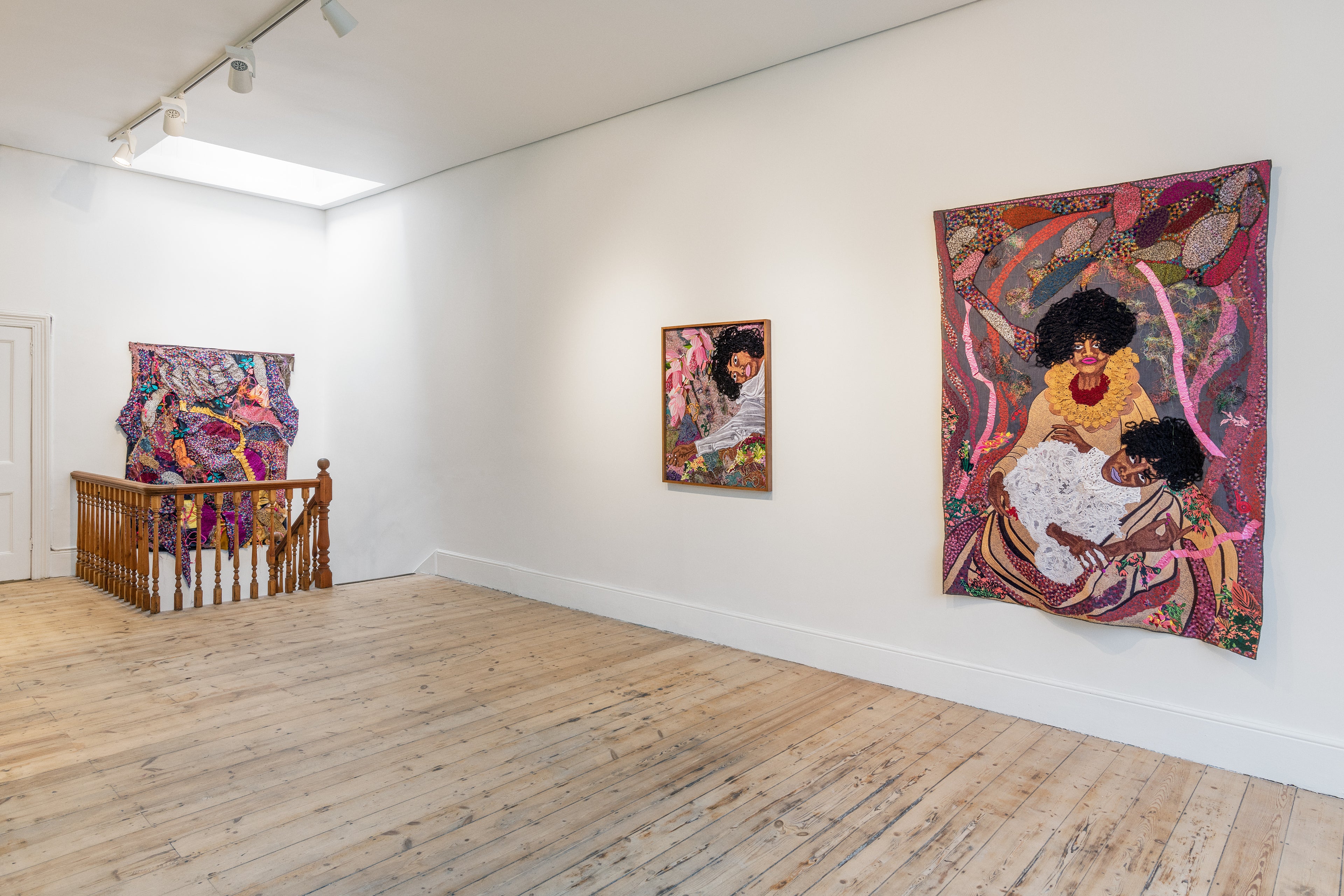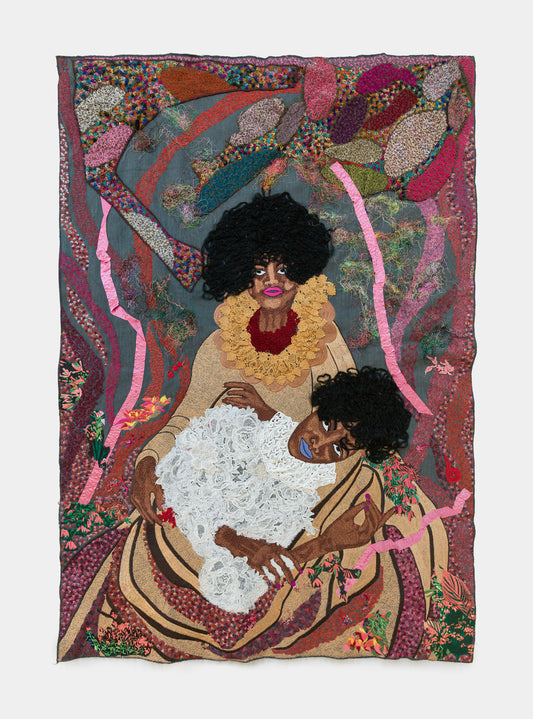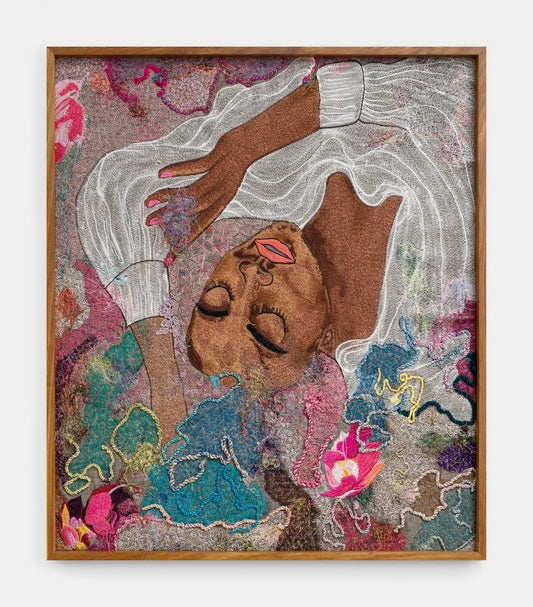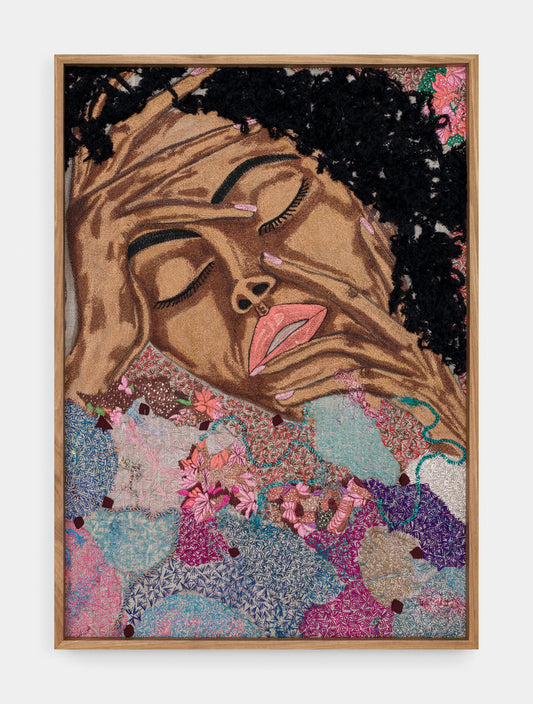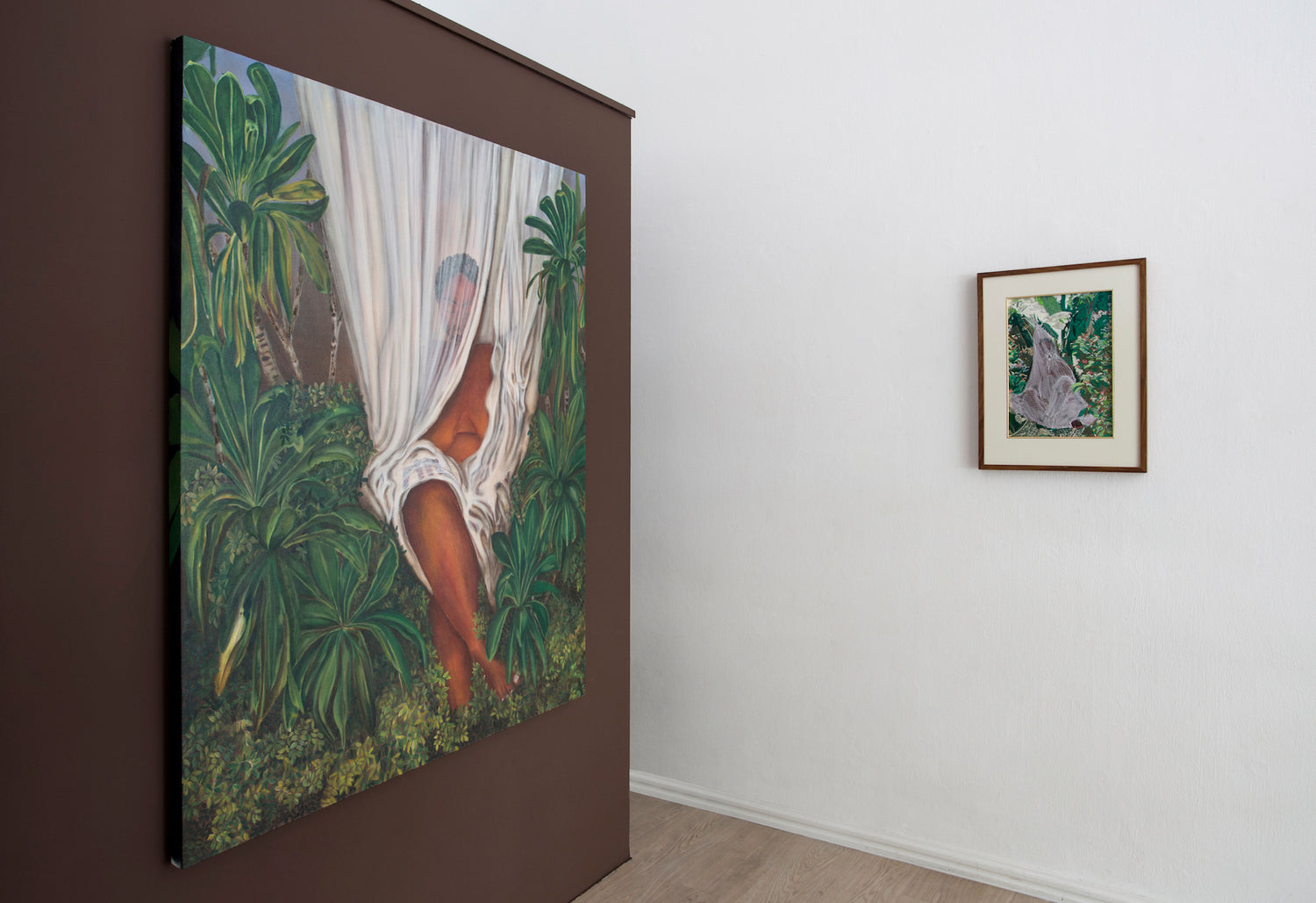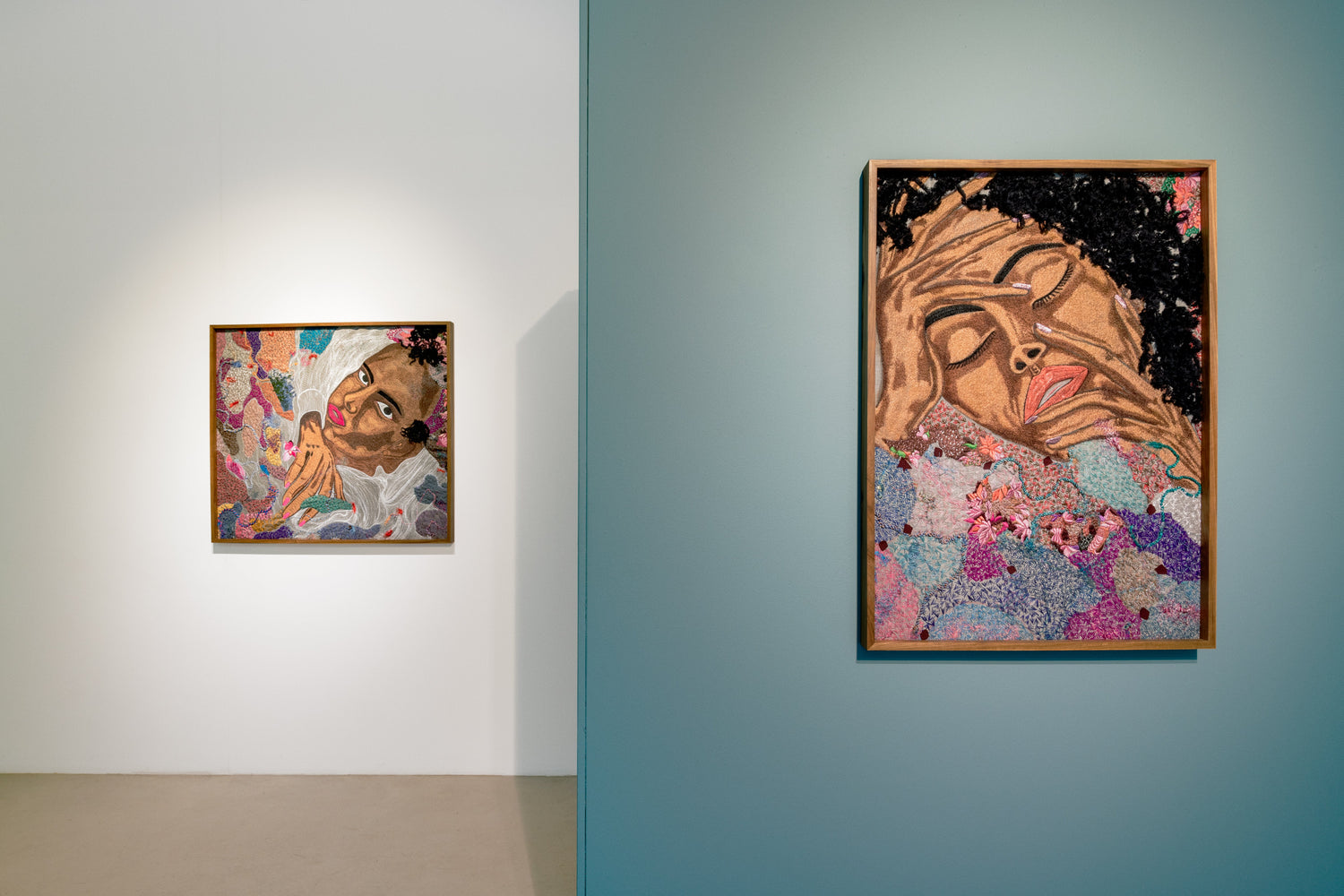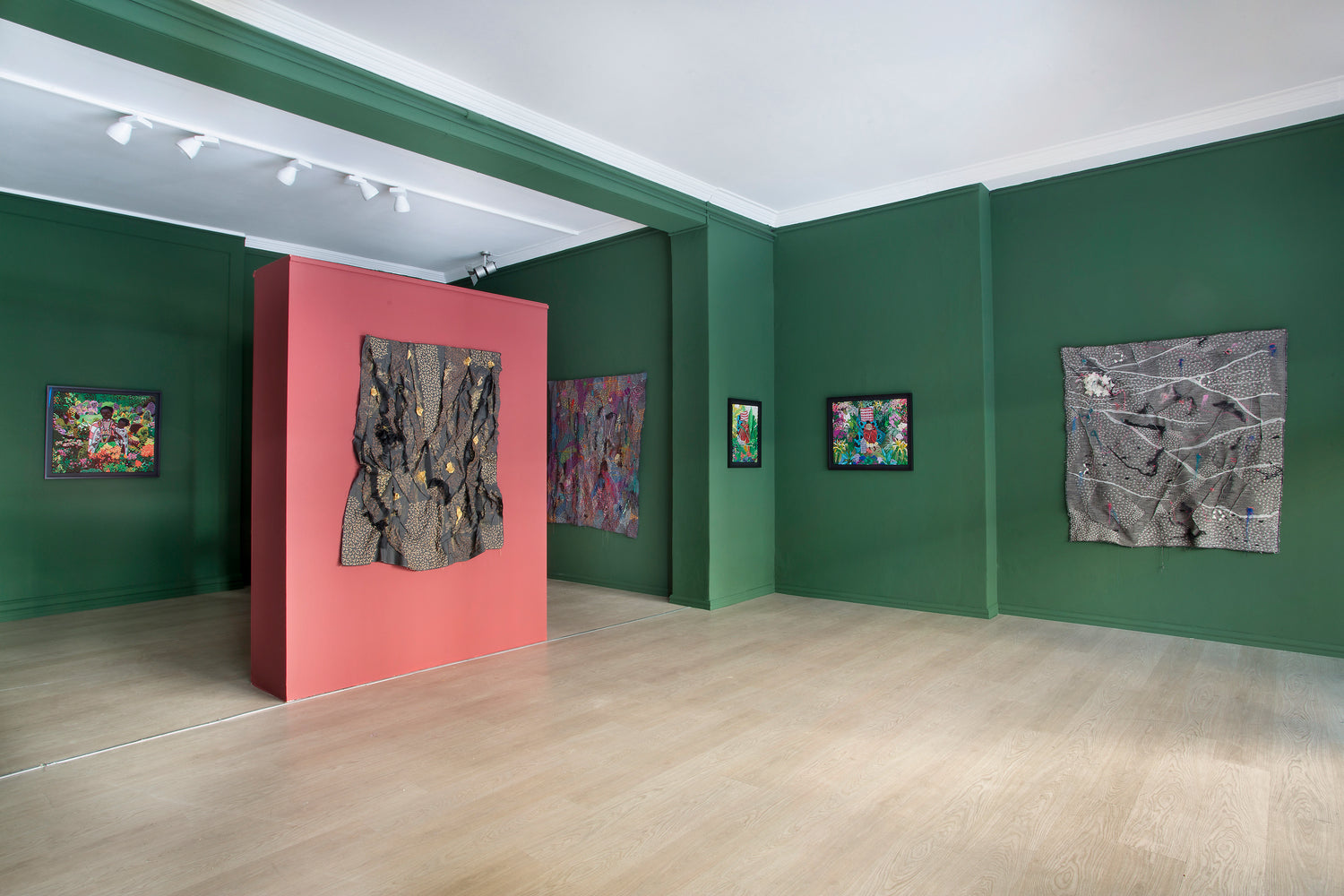A World I Dream Of
Text by Sandra Dodson
A British-Caribbean character in Zadie Smith’s On Beauty describes the joy she experiences whenever she looks at Haitian painter Hector Hyppolite’s iconic work, Maîtresse Erzulie. The queenly Haitian Iwa (spirit), with her origins in African indigenous spirituality, holds up her left hand as if giving or receiving a signal. Her strong face has a noble expression; her wide eyes look ahead intently. Seeming to emanate from nature, to derive strength from it, she is enveloped by luxuriant tropical imagery: a kaleidoscopic profusion of foliage, fruit and flowers, birds and butterflies. She stands tall and naked, but for a red bandana.
In Haitian religion, Erzulie is a fierce protector of women, children and social outcasts. She has the spiritual knowledge to see beyond material reality and comes in many incarnations. At times she is associated with love, beauty, goodwill, and abundance but can also represent jealousy, vengeance and discord. In an unravelling of Western dualism, she encompasses traditionally masculine and feminine attributes, and her image can evoke feelings of curiosity, empathy, love, playfulness, fear and discomfort. I seek to reconcile opposites, Erzulie seems to say. I am one, because I contain multitudes.
The richly-coloured, intricately embroidered and appliqued textile artworks of Kimberley-born artist Kimathi Mafafo have a close kinship with Hyppolite’s paintings. Mafafo’s background in painting (her father is watercolourist Rocky Mafafo) is evident in her sense of the visceral impact of colour and pattern in kaleidoscopic combinations, complemented by her sensuous use of shape and line. The compositions have an extraordinary kinetic quality sometimes at odds with the subjects’ attitudes of profound and serene repose. In this series, her subjects are not foregrounded, but incorporated into a busy profusion of abstract, colourful stitches, loose threads and embroidered flowers and leaves, nature suggesting a source of healing, spiritual strength and connection with the ancestors. The playful, repetitive style that characterises Mafafo’s embroidered works and paintings recalls Hyppolite’s proliferation of motifs of angels, flowers and birds, and speaks to the complexity of female identity, its myriad possibilities. Perhaps this is why there is an androgynous beauty about many of these women who, like Erzulie, do not solicit the male gaze, and evoke a contradictory range of feelings in the viewer.
Less figurative than in her earlier work, more stylised, flamboyant and theatrical with their bright – even lurid – purple and pink lipstick and nail polish, the subjects of this series are a far cry from the ‘voiceless women’ in Mafafo’s last solo exhibition, Embolden. They speak of self-assurance, secret knowledge, a sense of sisterhood. Their hand gestures seem to carry coded meanings, like Erzulie’s outstretched hand, gesturing to someone or something beyond the frame. Their eyes, wide open, recall the direct, unflinching gaze of the visionary, or the enlightened one who understands the Zen Buddhist riddle of one hand clapping. And, where their eyes are closed, this suggests attainment of a serene state of being, rather than an attempt to shut out a cruel world that has become too much to bear.
In the work titled “Maikarabelo – Responsibility”, we see a woman looking down, reading the opened pages of a book. She seems suspended in a circular, womb-like universe, and she is receiving instruction from another. What is she reading, the viewer wonders? What secret and empowering knowledge is there? What language is the book written in? As the Setswana titles of the artworks suggest, the book pays homage to and affirms the artist’s mother tongue, the language of her ancestors. Mafafo speaks of her creativity as a thread passed down from her forebears, a sisterhood woven across generations. In this way her artistic practice is an important connection with her past and with her people’s collective memory. But it is also a passage to an imagined future: a dreamed-of space beyond the othering and subjugation of women’s bodies and black bodies, a place of joy.



